Tubeless bicycle tires are in wider use than ever before. Installing them (especially at home instead of in a professional bike shop) can be a hassle - difficult, time consuming, and sometimes impossible. With these tips, you can tame your tubeless tires, making installation faster and easier.
The right tools and the proper technique make all the difference. Here we go:
Tires which have been stored folded and kept in a cold basement will be tough to seat and inflate tubeless. With tubeless, we don't have the advantage of the inner tube forcing the tire beads into the right spot as the tube inflates. You can run into a similar challenge when you're on-site at a Winter cyclocross race - tubeless cyclocross tires will be much easier to mount and seal when they're warmed up first.
For more tubeless success, warm the tires up first, outside in the sun, or even with a hairdryer. If the tire has been folded, open it up into the hula-hoop shape and allow it to take the form of a tire again before you try to mount it up - preferably the day before.
Bike shops and pro mechanics don't struggle with floor pumps - they use air compressors and proper inflator tools designed specifically for bicycles. An air compressor is like the "easy button" for working with tubeless tires.
If you're interested in adding an air compressor to your arsenal, check out this article with complete step-by-step instructions: How to setup a home air compressor for use with tubeless bicycle tires. In addition to the compressor, you'll need an inflator tool that matches the tubeless valves on your bikes (presta or schrader.)
Regardless of whether you're using an air compressor or a floor pump, the core of your valve can actually get in the way, because it limits the total air volume that can pass through.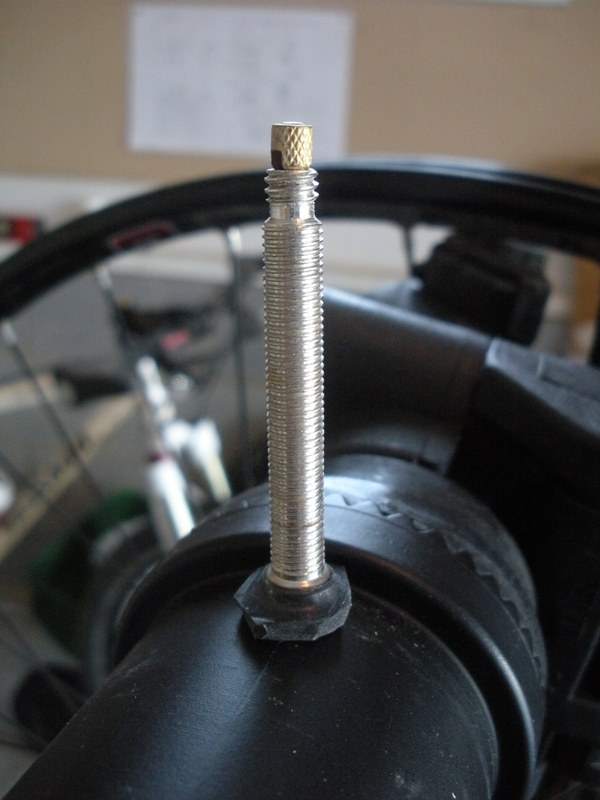 We need a big blast of high-pressure air to seat tubeless tire beads. If needed, you can remove the valve core, then try again to seat the bead. Sometimes with the valve core out of the way, a little bit more air volume can get through - and sometimes that little extra pressure is what you need.
We need a big blast of high-pressure air to seat tubeless tire beads. If needed, you can remove the valve core, then try again to seat the bead. Sometimes with the valve core out of the way, a little bit more air volume can get through - and sometimes that little extra pressure is what you need.
All the air will immediately escape through the valve as soon as you remove the pump or inflator head, of course - you'll need to re-install the valve core (after the beads are seated) to make it airtight once again.
Once you've got the tire beads seated, let's not mess with it again! Using a good quality tire sealant means more time will pass before we have to repeat the process, since the sealant dries out through evaporation over time. The gold standard is Stan's NoTubes sealant. You might also want to add a bit more sealant than you think you need - check the sealant manufacturer instructions for guidelines on how much.
Once your tubeless tire is mounted, avoiding un-mounting it if possible at all costs. That includes when adding sealant. To reduce time in the shop, always top-off the sealant by injecting it through the valve if possible, instead of breaking the tire bead again. Inexpensive sealant injectors make this easy - remove the valve core, inject the sealant, and replace the valve core.
That includes when adding sealant. To reduce time in the shop, always top-off the sealant by injecting it through the valve if possible, instead of breaking the tire bead again. Inexpensive sealant injectors make this easy - remove the valve core, inject the sealant, and replace the valve core.
For a tubeless tire to seat properly and become airtight, we need the tire bead to slide into place - moving from the deep center channel of the rim, to the outer edge, where the tire bead can mate up against the hook of rim. You'll know it happened when you hear the bead pop into place with a satisfying "snap" noise.
Sometimes the rubber of the tire bead sticks on the rim strip, preventing it from popping into place. If this happens, try lubricating the tire bead with a little bit of soap suds - just mix up some dish soap in a little bit of warm water. We really don't need the water, just the suds. Apply some bubbles with a sponge to ease the process of seating the bead.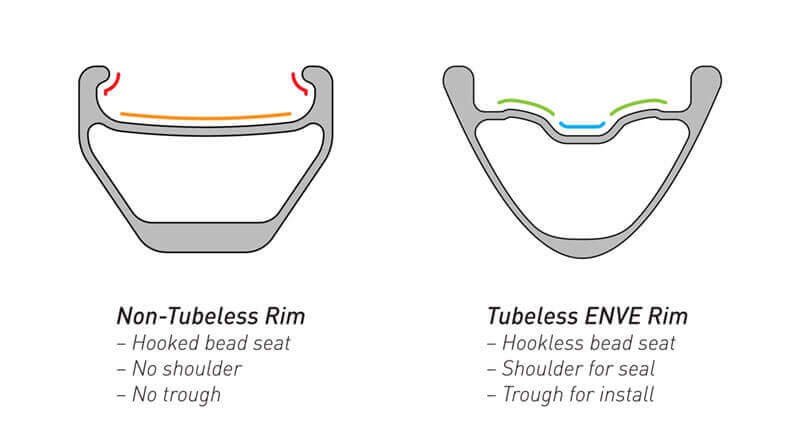
Sometimes you get a tire/rim combo that just won't work, no matter your tools or technique. In this circumstance, remove the tubeless valve, install an inner tube, and inflate the tire normally.
After riding it around for a couple days, remove the inner tube (taking care to only dismount one side of the tire), re-install the tubeless valve, install your sealant, then mount the remaining side of the tire. With one side of the tire bead already in place, you'll typically find the one remaining side much easier to get working tubeless.
This trick works because the air pressure inside the tube forces the tire bead outward to where it belongs. Once it's in place, it tends to stay there, even after the tube is removed.
Back to blogJeff Chen
I wanted to share some tips for mounting tubeless tires that I've learned from doing 4 tire comparison tests and mounting over 60 tires over the last year and a half:
Warnings:
Installation Process:
Clean the rim bed with alcohol to remove any trace of oil or grease.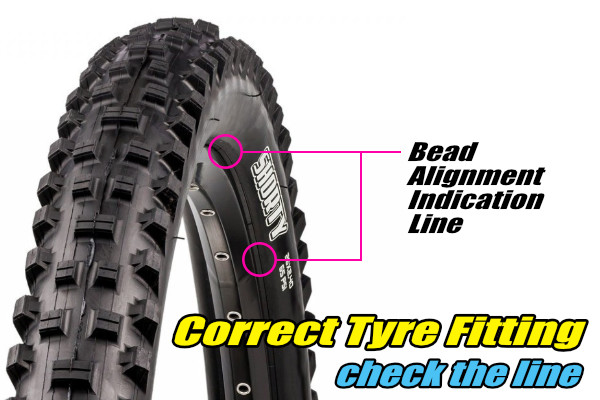 Tape tubeless-ready rims with tubeless tape and install valves onto the rim. Be as careful as you can to tape rims securely as losing air through improperly installed tape seems to be the most common cause of tubeless setups not being able to maintain tire pressure.
Tape tubeless-ready rims with tubeless tape and install valves onto the rim. Be as careful as you can to tape rims securely as losing air through improperly installed tape seems to be the most common cause of tubeless setups not being able to maintain tire pressure.
Check the tire for markings that indicate direction of rotation before installing.
Install the tire bead on one side of the tire onto the rim.
Install the other tire bead ending at the valve. (The valve tends to allow less room for a tire bead leading to a tighter fit if you end away from the valve.)
[If you only have a floor pump] Try to inflate the tire. If you can get the tire beads to form some level of seal with the rim bed, you'll be able to get the tire to hold air. From that point keep pumping fast(!) up to 35 psi. You'll generally hear a 'snap' as the tire beads seat at about 35 psi. I don't recommend going above 40 psi to reduce the risk of tire and/or bead blowouts. I've found that about 1/4 to 1/2 of tires install easily with just a floor pump.
I've found that about 1/4 to 1/2 of tires install easily with just a floor pump.
See tips and tricks below for ways to help the bead seat with just a floor pump
See below for the tire brand/rim brand combinations that I've found install easier
Warning: Be VERY careful not to exceed 40 psi in the tire to reduce the risk of tire and/or bead blowouts.
[If you have access to a compressor or gas station air hose] The process of installing tubeless tires is a LOT easier with access to a compressor. The high pressure that a compressor can deliver quicker than a hand pump helps force tubeless tire beads against a rim bed from which you can then add air up to the tire pressure at which the tire beads will seat (about 35 psi).
Warning: Be VERY careful not to exceed 40 psi in the tire to reduce the risk of tire and/or bead blowouts.
Congratulations if you are up to this point.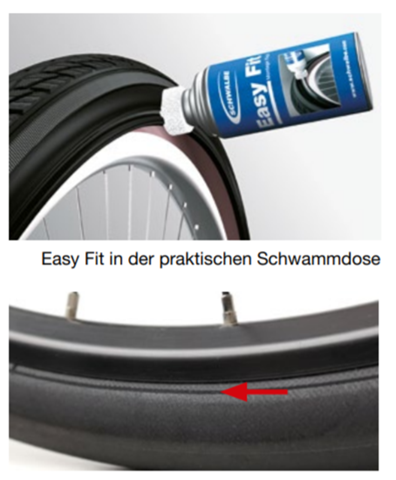 Getting the beads seated is the most challenging part of this process. To complete the installation you need to add sealant into the tire & distribute the sealant around the sidewalls of the tire.
Getting the beads seated is the most challenging part of this process. To complete the installation you need to add sealant into the tire & distribute the sealant around the sidewalls of the tire.
Let the air out of the tire. Generally the tire beads will remain seated on the rim.
Remove the tire valve core. Generally tubeless valves will be of the presta variety, not the schraeder valves that are typically used with car tires)This is the top part of the presta valve that screws into the larger diameter base of the valve. You can do this by using a core removal tool such as the Stans NoTubes Core Remover Tool or an adjustable wrench if you don't have a core removal tool.
Inject about 4 oz of tubeless sealant into the tire through the tire valve with the valve core removed
Reinstall the valve core
Pump up the tire to about 35 psi
Shake the wheel/tire laterally to distribute sealant onto the tire sidewalls. Rotate the wheel/tire as you continue to do this around the entire tire.
Rotate the wheel/tire as you continue to do this around the entire tire.
Rotate the wheel/tire held horizontally to allow sealant to work its way into the junction between tire bead & rim. Set the wheel/tire down horizontally for 5-10 minutes. A cardboard box is a good way to keep the wheel/tire level. Flip the wheel over to the other side and repeat this process. Losing air due to tire beads not being adequately sealed against a rim is another common cause of tubeless setups not being able to hold pressure.
Adjust tire pressure based on your weight. This is a formula from Stans NoTubes that provides a starting point for matching tire pressure to your weight:
Rider weight / 7 = X
Front pressure = X -1 psi
Rear pressure = X -2 psi
Example based on a rider weight (with gear) of 160 lbs
160 lbs / 7 = 22.9
Front pressure = 22.9 - 1 = about 22 psi
Rear pressure = 22.9 + 2 = about 25 psi
Tips & Tricks:
Use rims designed for tubeless use: Tubeless rims have a ridge next to the bead seat that will help to "lock" a tubeless tire's bead onto the rim after it is seated.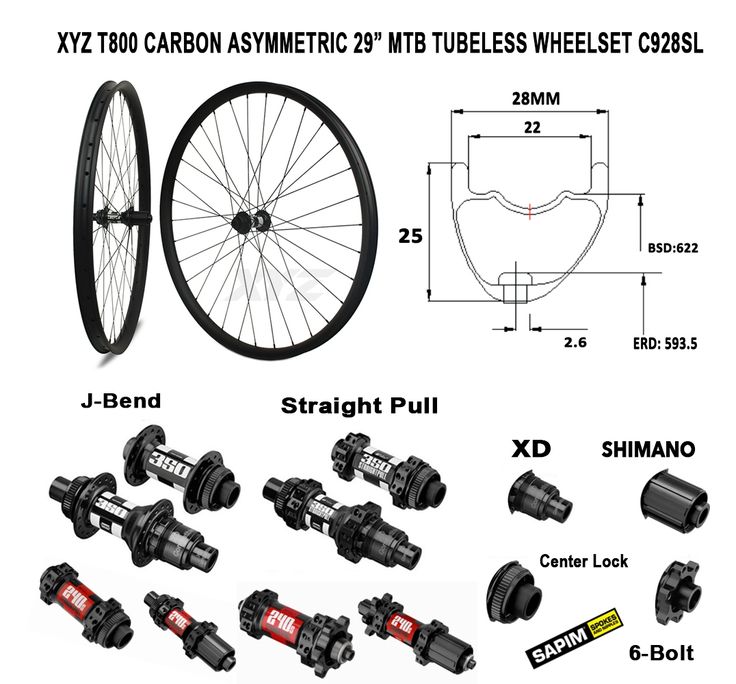 I personally will not do tubeless "conversions" with non-tubeless rims. Non-tubeless rims that don't have the ridge to help lock in a tubeless tire's bead greatly increase the risk of burping (losing air in hard cornering) or rolling a tire off in corners.
I personally will not do tubeless "conversions" with non-tubeless rims. Non-tubeless rims that don't have the ridge to help lock in a tubeless tire's bead greatly increase the risk of burping (losing air in hard cornering) or rolling a tire off in corners.
Use tires designed for tubeless use: Tires designed for tubeless mounting have a casing that is more likely to be air tight as well as tighter fitting beads (keep reading for the benefits of tighter fitting beads for ease of tubeless installation).
Seat the tire beads before adding sealant: Trying to seat a tire that already has sealant added just adds potential for messiness. The sealant does not help the initial bead seating process.
Seating the tire beads with just a floor pump: If a tire's bead fit snugly against the rim bed, you have a good chance of being able to just use a floor pump to get enough air pressure to seat the beads. An air tight seal between bead and rim allows you to gradually build up enough air pressure in the tire until the beads seat around 35-40 psi.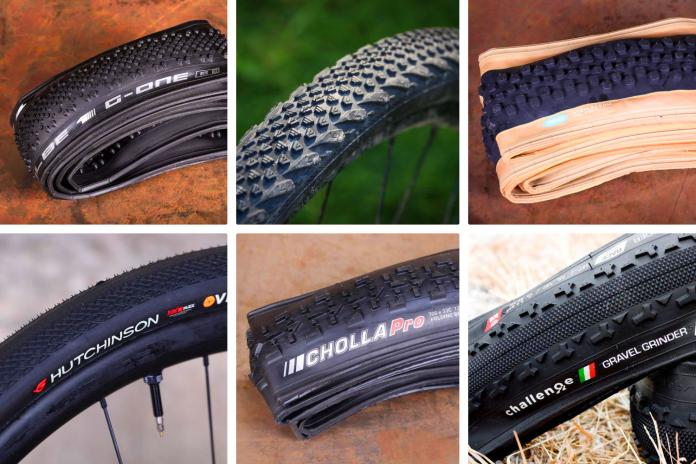
Tricks for seating tire beads when a tire doesn't start holding air pressure immediately:
Make sure the tire is covering the valve hole
Try to move the tire so that the beads press against the rim bed
Use an inner tube to strap the tire against the rim
Seating the bead without a compressor: A inexpensive way to get a high volume of air into a tire at high velocity is to use a gas station air compressor. If you have Presta valve, you will need a presta-to-schrader valve adaptor such as the Slime 23042 Presta to Schrader Valve Adapter. The high velocity of air that is delivered by this method or with a compressor pushes the tire beads against the rim allowing pressure to build up to seat the beads.
Add sealant via a tubeless valve that has a removable valve core: Many instructional videos will recommend removing one side of the bead at this time to add sealant.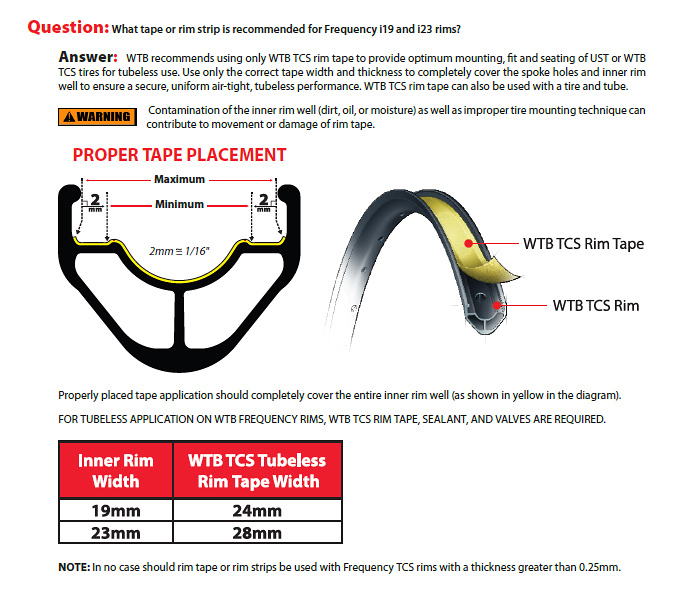 I don't agree with this approach. You've done a lot of work at this point to get both tire beads seated properly. Why would you want to undo part of the work you've done to seat the beads? Adding sealant through the valve core is by far the lowest effort way to add sealant.
I don't agree with this approach. You've done a lot of work at this point to get both tire beads seated properly. Why would you want to undo part of the work you've done to seat the beads? Adding sealant through the valve core is by far the lowest effort way to add sealant.
For really hard to seat tires, pulling the tire bead on top of the rim could be worth trying: I just learned this new method of getting a better seal between tire and rim to do the initial inflation & seating of the bead if you don’t have access to a compressor or tubeless charger pumps that can deliver a high volume blast of air. The basis of this technique is that you pull the tire bead on top of the rim with a tire lever. When you get to about 40-50% of the tire bead resting on top of the rim. you put your thumb on the tire bead so it doesn’t slip off of the rim and gently pull out the tire lever. Repeat on the other side and pull the bead up on the rim as far as you can go. Proceed to inflate the tire. Once you are able to get some pressure in the tire. There seems to be at least some risk of having the tire bead blow off the rim when you inflate the tire, so be aware of that and try this technique at your own risk. You can see the technique being used at: https://youtu.be/tE3h5nmDdOo.
Once you are able to get some pressure in the tire. There seems to be at least some risk of having the tire bead blow off the rim when you inflate the tire, so be aware of that and try this technique at your own risk. You can see the technique being used at: https://youtu.be/tE3h5nmDdOo.
Easier to install tire brand/rim brand combinations
On Stans rims (Easton & DT rims have a similar diameter. Mavic & WTB have a slightly smaller diameter)
Schwalbe Snakeskin - Easiest
Maxxis Exo - Fairly Easy
Specialized 2Bliss - Fairly Easy
Continental Protection - Difficult to do initial seating of the beads on Stans rims
WTB TCS - CAN work but beads may be tight as the bead diameter is based on the tighter UST bead specification. I have mounted 2 WTB tires on Stans rims, but have heard that others have had challenges with this.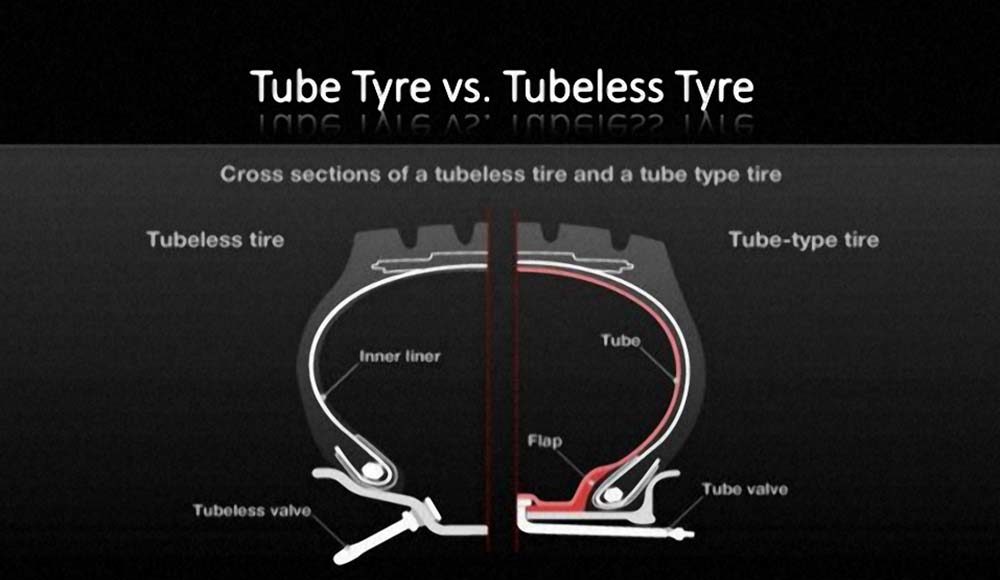 Works better on WTB and Mavic rims.
Works better on WTB and Mavic rims.
Michelin, Hutchinson - I don't have direct experience but I believe these brands will work better on WTB and Mavic rims.
This is a great video on installing difficult-to-mount tubeless tires:
You can help support Dirt Merchant Bikes’ product testing by purchasing through our retail partners.
Orange Seal Tubeless Sealant
Our experience is that Orange Seal seals punctures quickly and consistently. The amount of rain we get in the PNW makes sealants drying out less of an issue, but Orange Seal also resists water absorption well.
Stan’s Tubeless Rim Tape
Stan’s tape has a little stretch that helps in removing air bubbles when taping rims.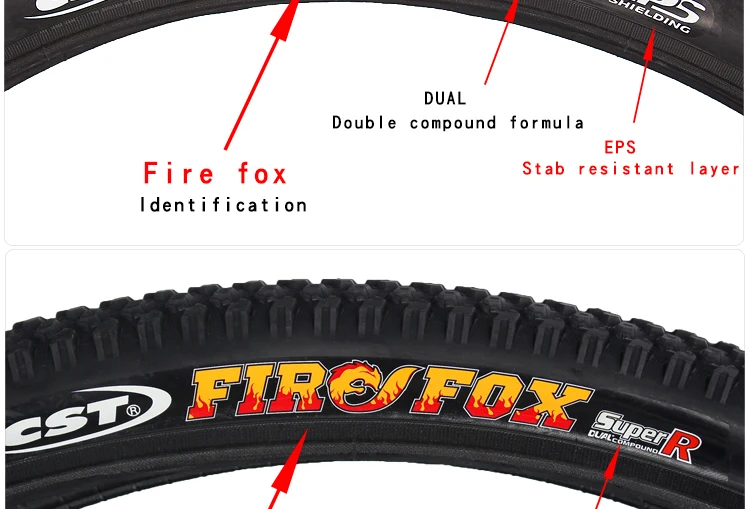 It sticks well to most alloy rims and some carbon rims. It also removes cleanly unlike Gorilla Tape.
It sticks well to most alloy rims and some carbon rims. It also removes cleanly unlike Gorilla Tape.
Stan’s Tubeless Valve Stems
Stan’s valves have a solid rubber base that helps reduce air leaks around the valve base. Tightening the locknut helps seal tape against the rim.
Diamondback Steel Core Tire Levers
It can be helpful to use a tire lever to get the last part of a tire bead onto a rim. Plastic tire levers don’t last long with that type of abuse. I like these better than the more expensive Park Tool TL-6.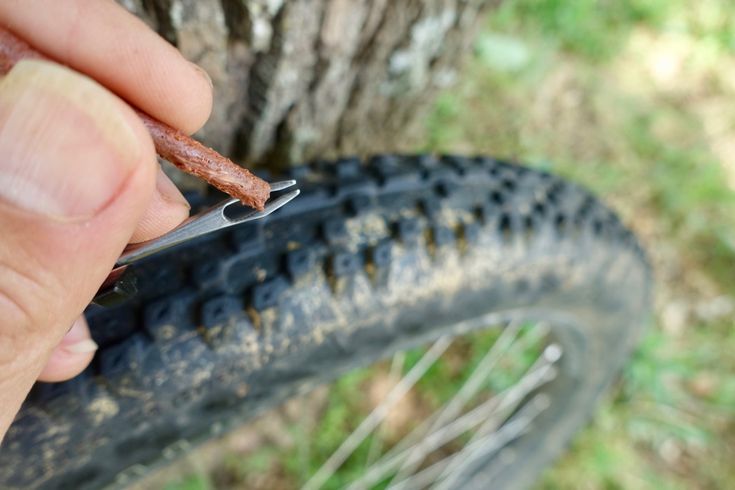 2 Steel Core Tire Levers because the entire tip of the lever is covered in plastic to reduce the chance of scratching a rim.
2 Steel Core Tire Levers because the entire tip of the lever is covered in plastic to reduce the chance of scratching a rim.
Orange Seal Sealant - 16 oz Refill bottle
Orange Seal Sealant - 32 oz Refill bottle
Stan’s No Tubes Rim Tape 60 Yards x 30mm
Stan’s No Tubes Rim Tape 60 Yards x 27mm
Stan’s No Tubes Rim Tape 60 Yards x 25mm
InTires TagsTires
Tubeless tires can hardly be called the know-how of the bicycle industry, however, they still raise questions for many. The topic itself, as a rule, is surrounded by a lot of skepticism and distrust, which are more often explained by a lack of understanding of basic things and a lack of experience in riding such wheels.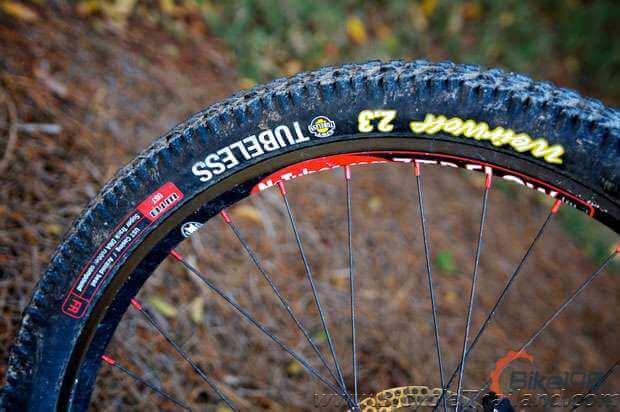 To dispel all these doubts, we answer the main questions related to tubeless technologies.
To dispel all these doubts, we answer the main questions related to tubeless technologies.
These are bicycle tires that do not have a tube. At the same time, tubeless technology is not only about tires. We are talking about a whole wheel system, which also includes a special rim and a sealant that gives the wheel anti-puncture properties. The tubeless concept makes the bike more comfortable to use and improves its riding performance, which will be discussed in order. nine0003
How long ago did this technology appear and can it be trusted?
Those who hear about bicycle tubeless for the first time usually tend to be suspicious of them. You can dislike this technology for subjective reasons, but you definitely shouldn’t distrust it. Tubeless tubes have been massively used for cars and motorcycles for several decades, and during this time they have not given reason to doubt their reliability.
The first tubeless systems for bicycles appeared in 1999, when the French rim brand MAVIC, in collaboration with tire manufacturer Hutchinson, presented their concept of a simple and effective tubeless wheel. In the 2000s, this technology remained the prerogative of mainly professional athletes, who quickly appreciated its main advantages: lighter weight, more air in the wheel, good "traction" and durability.
In the 2000s, this technology remained the prerogative of mainly professional athletes, who quickly appreciated its main advantages: lighter weight, more air in the wheel, good "traction" and durability.
In recent years, tubeless has finally ceased to be perceived as something exotic. For example, today a significant part of the MTB and almost all touring cars come with such wheels as standard. A wide variety of sealants are also available on the market, and the number of those who are discovering the benefits of tubeless technology is steadily increasing. nine0003
The tubeless system provides a special rim and tires that are labeled tubeless ready or TR. However, the rims themselves are easy to distinguish visually - they have a low side and characteristic walls with recesses, forming a kind of lock in which the tire cord is wedged when air is injected. Due to this, in the inflated state, the rubber reliably and hermetically “sits” on the rim, without breaking off the wheel even at low pressure.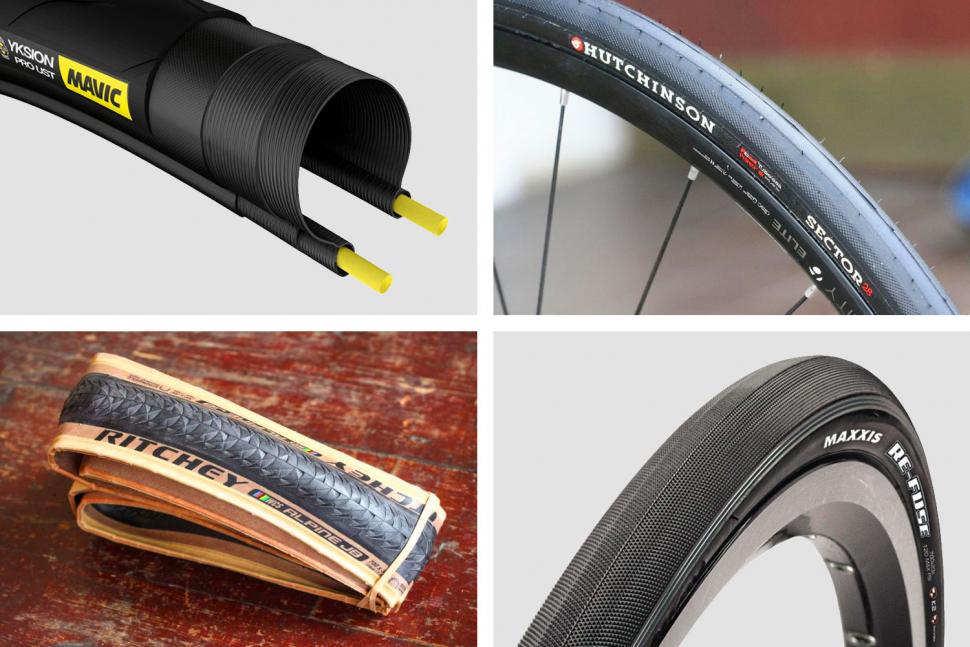 The rim itself is additionally glued with a sealing tape, after which the nipples are installed separately. nine0003
The rim itself is additionally glued with a sealing tape, after which the nipples are installed separately. nine0003
The benefits of tubeless wheels are revealed no matter how often and what kind of bike you ride: whether it's weekend trips, extreme downhill or long-distance touring. Nevertheless, for certain categories of cyclists tubeless still open up more opportunities: first of all, we are talking about those who are seriously passionate about off-road.
When actively driving off-road with tubeless tubes, you can ride on lowered wheels and at the same time not be afraid of such an unpleasant type of puncture as a snake bite. Low tire pressure, in turn, gives better handling, dampens vibrations more effectively and generally provides more comfort on difficult tracks. If we are talking about cyclists, then they appreciate tubeless for their anti-puncture qualities. nine0003
Road bikes also use tubeless wheels. Moreover, they are the pioneers of this technology.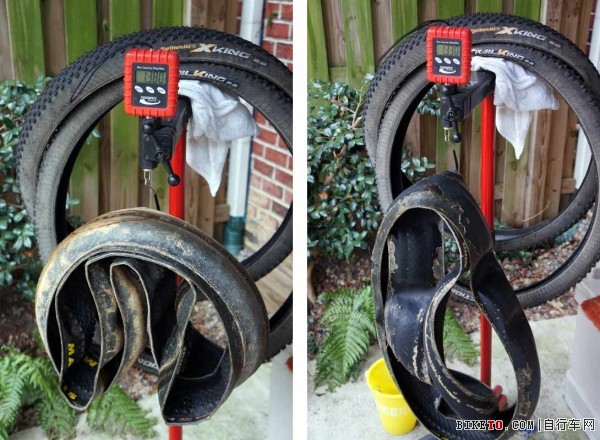 But road tubeless tubes are a different story: they are designed for different operating pressures and have tangible design differences. Therefore, further we will talk mainly about those tires that are put on mountain, touring and city bikes.
But road tubeless tubes are a different story: they are designed for different operating pressures and have tangible design differences. Therefore, further we will talk mainly about those tires that are put on mountain, touring and city bikes.
These are the two rim formats that define the features of a tubeless wheel assembly. BST is a standard that involves the installation of a special sealing tape that prevents air from leaking through the holes in the spokes. This is the most common version of tubeless systems. nine0003
UST is a blind rim in which an additional bridge isolates the spoke holes. Thus, there is no need for laying a sealing tape. In practice, this greatly simplifies life, because when installing a tire (especially without proper experience), the tape tends to crush, which is why you have to reassemble the wheel. It is easy to guess that such rims also have a drawback - their price.
The tubeless system in the form in which we wrote it above is already a full-fledged wheel, it can be installed on a bicycle and hit the road. But there is an important nuance. First of all, tubeless tubes are valued for their anti-puncture qualities: for this, a small amount of a special liquid, a sealant, is poured inside the tire. nine0003
But there is an important nuance. First of all, tubeless tubes are valued for their anti-puncture qualities: for this, a small amount of a special liquid, a sealant, is poured inside the tire. nine0003
Yes, you can. But you should not do this. Firstly, this is illogical: for no reason you are depriving yourself of the main advantage of tubeless - the anti-puncture effect. But more importantly, it is very difficult (or even impossible) to inflate such a tire in a completely flat state with a portable pump: to do this, you need either a strong floor pump or a booster. Naturally, no one will take such bulky things with them on the road. Filled with sealant 95% of punctures "seal" without a critical loss of pressure, and in most cases there is no need for even light pumping. Thus, the probability of being with a flat tire is very low.
So, if you put tubeless, sealant is still needed. Such fluids are easy to find in any bike shop, they are inexpensive and require replacement on average once every three to four months, so there is no need to talk about any inconvenience.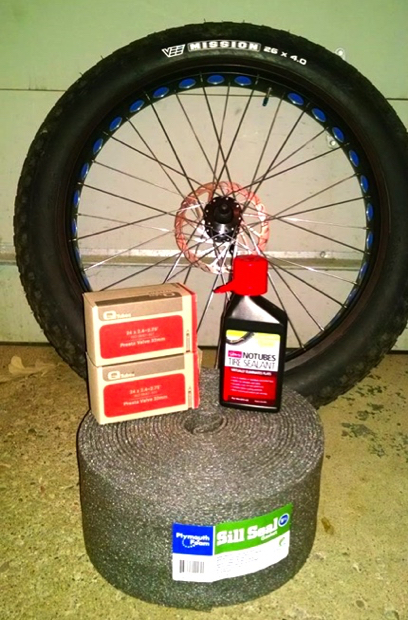 Yes, in order to cope with the fill, you need to acquire a certain skill, but this is much easier than constantly changing broken cameras. In addition, sealant can be replaced once a season in a specialized service. nine0003
Yes, in order to cope with the fill, you need to acquire a certain skill, but this is much easier than constantly changing broken cameras. In addition, sealant can be replaced once a season in a specialized service. nine0003
Bicycle sealants are based on fine particles (rubber or polymer fibers) suspended in a liquid carrier. Inside the wheel, the sealant does not polymerize: it is in a liquid state and is distributed along the inside of the tire during movement. When a puncture occurs, the air flow begins to push the solution out. A fine suspension clogs the hole, and the sealant dries quickly. Thus, there is a reliable "sealing" of the puncture. nine0003
If we talk about typical punctures - collisions with thorns, wires, small glasses - such damage is self-healing without a noticeable loss of pressure. Usually, a puncture can only be guessed from a small spot on the surface of the tire. Naturally, the sealant works with more complex damage. You can count on it even if you pierce the wheel with a thick nail, 4-5 mm in diameter.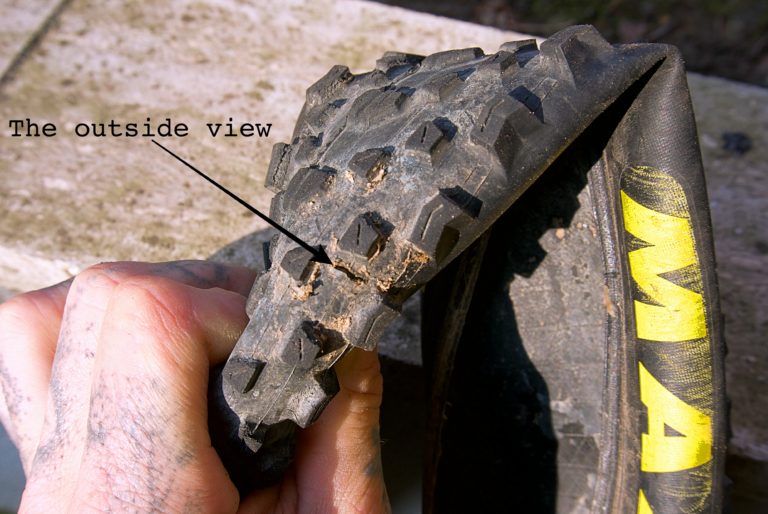 If you don't understand how a liquid can seal such holes, you can watch numerous crash tests on YouTube that demonstrate the miraculous properties of sealants. nine0003
If you don't understand how a liquid can seal such holes, you can watch numerous crash tests on YouTube that demonstrate the miraculous properties of sealants. nine0003
The consumption per tire is from 50 to 100 ml. If we are talking about standard MTV tires, the golden mean is about 60 ml per wheel. The exact dosage will always be written on the bottle. It is difficult to get confused even for those who do not like to read instructions: most sealants have measuring containers or a dosage scale on the bottle itself.
Here, too, everything is conditional and depends on the characteristics of the specific composition and intensity of punctures. In the absence of serious damage that entails the leakage of a large volume of sealant, you can easily skate a whole season on one fill. Some cyclists prefer to do an incomplete start-up gas station and gradually add 20-30 ml of fluid every two to three months. You can also navigate by how effectively the sealant works: if you see that small punctures are sealed with a strong deflation of the wheel, it may be that the composition is no longer enough and it needs to be added. Be that as it may, sealant is a very economical thing that lasts for a long time. nine0003
You can also navigate by how effectively the sealant works: if you see that small punctures are sealed with a strong deflation of the wheel, it may be that the composition is no longer enough and it needs to be added. Be that as it may, sealant is a very economical thing that lasts for a long time. nine0003
The sealant inside the tubeless tends to dry out, forming a characteristic film. Whether or not to clean the tire cavity is up to you. This is a purely aesthetic moment, which does not affect the operation of the anti-puncture fluid. The sealant can simply be added as it dries and not bother with unnecessary worries. It is more likely that the tire will completely wear out than it will have time to completely clog with dried filler.
nine0063
Serious damage - large diameter punctures, small cuts, run over nails with subsequent tire rupture - are repaired using special repair worms.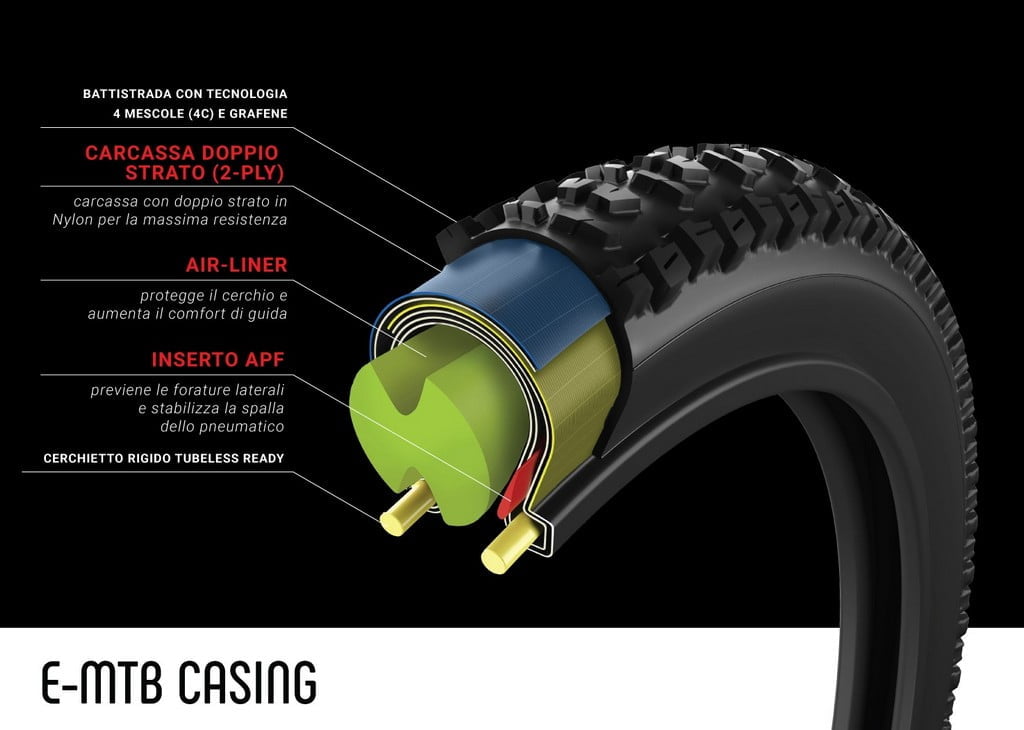 These are rubber or fibrous bands that are inserted into the hole to reduce its area and allow the sealant to seal the puncture.
These are rubber or fibrous bands that are inserted into the hole to reduce its area and allow the sealant to seal the puncture.
With long longitudinal cuts it is more difficult. Here you need to either sew up the dissection with nylon threads, or stick a patch on the inside of the tire. You don’t have to worry about the tightness of the repair site - the sealant will do this work, of course, if it does not have time to leak out. But being able to inflate a completely flat tire with only a portable pump will require skill. nine0003
In fairness, we note that such complex injuries are rare for most cyclists. But for those who are seriously passionate about off-road, it is better to play it safe with a spare camera. In this case, having caught a cut, you can always drain the sealant, unscrew the nipple from the rim and install a regular camera. And in order not to drive with a “hernia” protruding outward, we recommend placing, for example, a bill folded in half under the cut on the tire.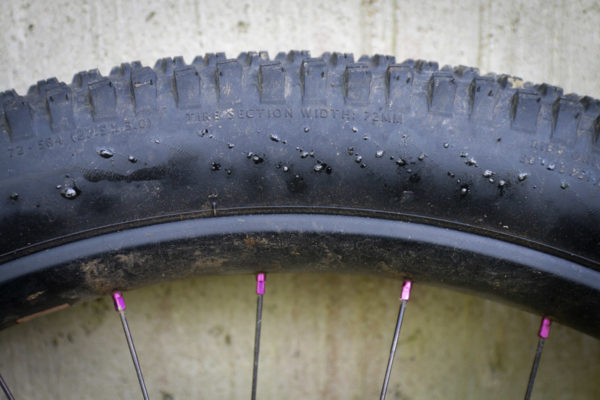
Tubeless allows you to forget about such an unpleasant form of damage as a "snake bite" forever. It usually happens when at full speed you catch a pothole in the pavement, unsuccessfully jump onto a curb or run into a stone on a downhill. Hitting the edge of a hard object, the tire is crushed, and the rim walls work like incisors, damaging the chamber in two places. In tubeless wheels, this scenario is excluded, because. there is nothing to break through here. Of course, it can be assumed that the rim will cut the tire itself, but this should be a blow of enormous force, which is almost never encountered in practice. nine0003
Rejection of the chamber increases the volume of air in the wheel. This changes the contact patch (it becomes flatter) and allows the wheels to better absorb off-road bumps. Add here the ability to ride at low pressure, without being afraid of a snake bite, and it becomes completely clear why tubeless lovers of hard off-road riding so idolize. Soft tires with a large contact patch "fit" all the bumps in the road, giving excellent traction on rocks, forest primers and other off-road. nine0003
Soft tires with a large contact patch "fit" all the bumps in the road, giving excellent traction on rocks, forest primers and other off-road. nine0003
In addition to traction, tubeless tires improve shock absorption, dampen vibrations better, and generally provide more off-road comfort. At the same time, to get the most out of this rubber, you need to experiment a lot with tire pressure, trying to find the indicators that will best suit your individual riding style.
Finally, the camera is extra grams. By refusing them, you can save an average of 70-100 g of weight on each wheel. For some, this may seem like a formality, but it is worth considering the fact that extra grams on the periphery of the wheel have a stronger effect on driving performance. This difference is especially felt on road bikes: road bikes, gravel, touring. nine0003
They also exist. Moreover, it is far from formal. First, it's the price. The difference becomes especially noticeable when you buy tubeless systems separately: rims, tires + small things (tape, removable nipples, sealant). For tubeless you will have to pay an average of one and a half times more than for ordinary wheels, plus or minus the same class. And if we are talking about more advanced UST rims, then this means another + 30-40% to the cost.
For tubeless you will have to pay an average of one and a half times more than for ordinary wheels, plus or minus the same class. And if we are talking about more advanced UST rims, then this means another + 30-40% to the cost.
With tubeless by default, everything is more difficult in terms of installation (here we are talking about conventional BST systems). You need to learn how to properly glue the tape, accurately insert the nipples, carefully install tight rubber, making sure not to displace the tape and not fill everything with sealant. On the other hand, all this comes with experience, but what you will always have to put up with is the difficulty with pumping a completely flat tire.
A tubeless tube cannot be inflated until its landing board snaps into place on the rim. To do this, you need to sharply introduce air into the tire. The tire should straighten up and fall into the grooves with a characteristic click - then it can be safely pumped further. This all sounds simple if there is a compressor in the garage. Putting a tubeless tube into the grooves by pumping air with an ordinary floor pump is quite difficult, and almost impossible with a portable bicycle pump. nine0003
Putting a tubeless tube into the grooves by pumping air with an ordinary floor pump is quite difficult, and almost impossible with a portable bicycle pump. nine0003
All this makes life much more difficult. But there are solutions. In the field, a compact can of compressed air can help out. At home, installing tubeless tubes greatly simplifies the booster. This is a cylinder into which a high pressure is pumped with a pump, then it is connected to a nipple, the valve is lowered - and the air from the reservoir pumps up the wheel sharply.
As you can see, tubeless cameras also have enough disadvantages, but it is wrong to consider them in isolation from the advantages. For example, the probability of being with a completely flat tire away from home is very low, due to the anti-puncture qualities. Complicated installation is offset by the lack of punctures and roadside repairs. And by overpaying in price, you save on interchangeable cameras, and, of course, win as a roll on off-road.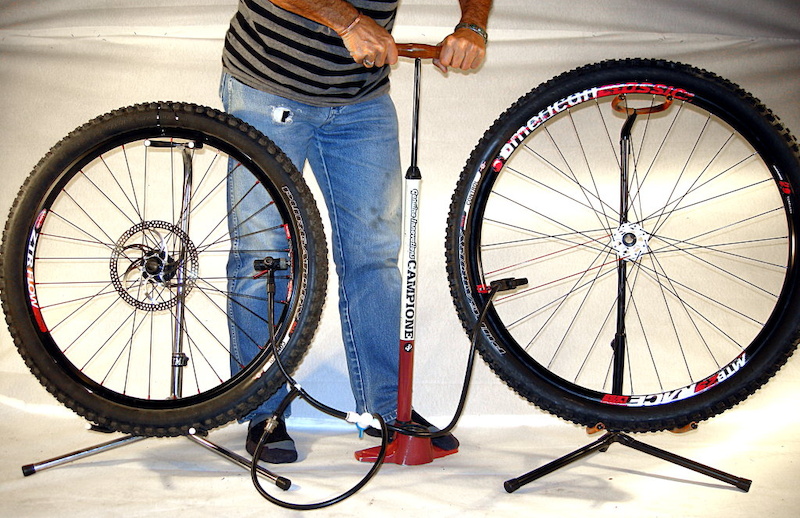 nine0003
nine0003
Motorists have been familiar with the technology of using tires without tubes for a very long time, you will not surprise them. With cyclists, things are a little different, even though tubeless is becoming more and more widespread, many people know very little about them. However, someone is thinking about switching to tubeless tires, because friends advise, someone is just interested in trying it. In any case, there are a lot of questions, and they require answers. Well, we have prepared the answers, so you are welcome. nine0003
Let's start from the very beginning. By the way, if you have something to add to the following, then we are waiting for your comments in our Facebook group.
The name itself already contains the whole meaning of tires of this type, they are used without cameras. In fact, we have before us an ordinary tire, which stands on the rim quite normally and is inflated with air without intermediaries. Almost. The rim and the tire itself have been slightly modified to provide an airtight seal in the seat. And sealant. It is needed so that punctures along the way do not bother you and are closed up without your participation. nine0003
Almost. The rim and the tire itself have been slightly modified to provide an airtight seal in the seat. And sealant. It is needed so that punctures along the way do not bother you and are closed up without your participation. nine0003
Tubeless has been around for a long time on mountain bikes, many do not see worthy alternatives. In the road world, things happen a little slower.
For the first time, Mavic and Michelin in 2004 introduced a turnkey tubeless solution for road racing, which was rather coldly received by athletes. They preferred to ride tubes or clinchers. The latter are easy to install and dismantle. Tubes are more difficult to work with because they stick to the rim, but their main advantages are that they do not fly off the rim when the air pressure is completely lost, they have a record low weight and rolling resistance. nine0063 Nowadays, the professional peloton is starting to look at tubeless, technology has stepped far ahead and now they allow you to get characteristics close or superior to tubes and the same clinchers.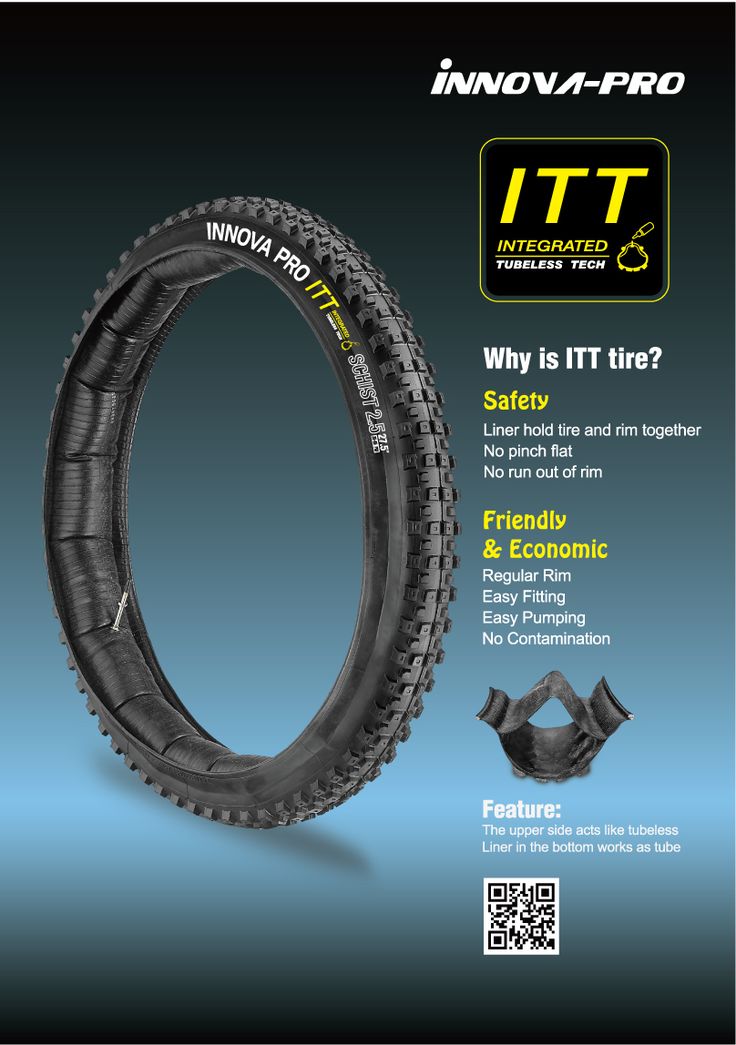 However, clinchers are the most inefficient in terms of energy efficiency, so the main competition flares up between tubes and tubeless.
However, clinchers are the most inefficient in terms of energy efficiency, so the main competition flares up between tubes and tubeless.
I would like to start with a snake puncture, which occurs due to the clamping of the camera between the rim and the tire during a collision with an obstacle. That is, there are already two punctures, and they have an oblong shape due to the rim. Such holes are treated with difficulty, and sometimes the camera is immediately sent to the scrap. This trouble occurs due to low air pressure in the chamber. nine0063 Yes, and so, tubeless completely exclude such a negative phenomenon, because there is simply no camera. And even if you hit the tire with the rim, the risk of getting a puncture is much lower and generally tends to zero.
Another positive is that tubeless requires less air pressure to give the same or better roll than clinchers. Clincher tires contain a chamber, which is an additional layer of rubber, the deformation of which requires energy.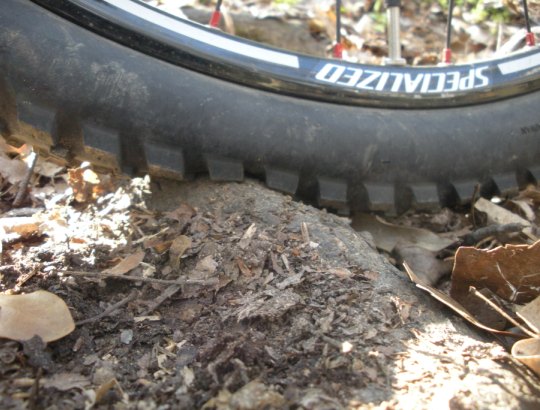 It may seem to you that the benefit is visible only on paper in the context of camera deformation... but no, gentlemen, the benefit is strongly felt from the first meters, the wheels roll easier. nine0003
It may seem to you that the benefit is visible only on paper in the context of camera deformation... but no, gentlemen, the benefit is strongly felt from the first meters, the wheels roll easier. nine0003
In addition to a good rolling tubeless provide better grip on the ground or asphalt due to the same reduced pressure. The contact patch of the tire with the road increases and ... you already understood everything. That is, tubeless tubes themselves do not know how to cling to the ground, but the reduced pressure provides a large area of contact with the road.
Also tubeless allows you to achieve weight reduction. True, everything here is very relative. The fact is that the tubeless design of the rim adds weight, the design of the tire also adds weight, the filled sealant also weighs something, but the lack of a chamber speaks for itself. nine0063 It's worth mentioning here. If we are talking about a racing wheelset, where there were light tires, a tube, and a rim, then the transition to tubeless will still add weight. I was talking about weight reduction in the context of an average bike, where there are often tires weighing a total of about 1 kg or more, as well as tubes weighing 250 grams each. In this case, yes, the weight of the wheels can be reduced if you do not save on a good tire with good puncture protection.
I was talking about weight reduction in the context of an average bike, where there are often tires weighing a total of about 1 kg or more, as well as tubes weighing 250 grams each. In this case, yes, the weight of the wheels can be reduced if you do not save on a good tire with good puncture protection.
From personal experience, I was convinced that it is possible to remove up to 1 kilogram of weight from MTB wheels when switching to tubeless mode. The wheels I had were Fulcrum Red Metal Zero, they have a rim without holes for the spokes and a bead with a good lock for tubeless use. Tires were Michelin weighing 880 grams each and chambers of 250 grams approximately. All this was in the 26th size. Instead of this whole kit, I put the Schwalbe Kojak 2.0 kit, which is not tubeless by default, but I really wanted to take the risk. The weight of this kit was only 880 grams. That is, my tires weighed 1.6-1.7 kg, and began to weigh 880 grams. We subtract another 400-500 grams of cameras, add 30 grams on two nipples and 120 grams of sealant on both wheels.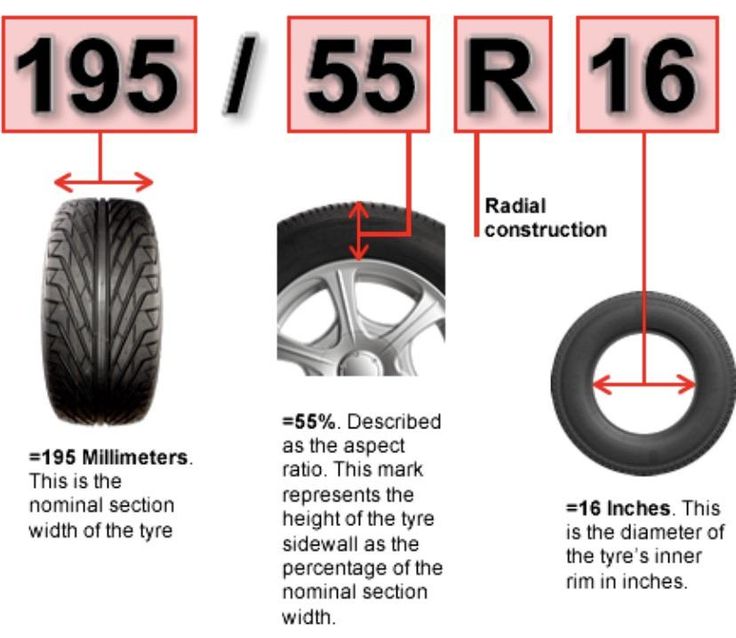 As a result, about 1 kg of real weight savings on wheels alone! nine0063 Of course, at that time I still strongly believed in the myth of reducing the weight of the wheels and was convinced that it became easier to accelerate. In fact, it has become easier to accelerate, it's true, but only because 3 atmospheres in the clincher and tubeless is a big difference in rolling resistance and rolling resistance. Yes, and from a bike that weighed 10 kg, I actually took off 1 kg, of course, this difference in the hands was very much felt.
As a result, about 1 kg of real weight savings on wheels alone! nine0063 Of course, at that time I still strongly believed in the myth of reducing the weight of the wheels and was convinced that it became easier to accelerate. In fact, it has become easier to accelerate, it's true, but only because 3 atmospheres in the clincher and tubeless is a big difference in rolling resistance and rolling resistance. Yes, and from a bike that weighed 10 kg, I actually took off 1 kg, of course, this difference in the hands was very much felt.
All this has been said about MTB tubeless tires, but there are also tubeless road tires. Here the situation is not much different from MTB. If you want to get the same roll as on clinchers, for example, or on tubes, less pressure is required. True, this also happens due to an increase in the width of the tire up to 28-32 mm. Yes, 23-25 mm used to be the gold standard, but the increase in width has a beneficial effect, both in reducing pressure and increasing comfort, as well as increased grip on the roadway. It seems that tubeless is ideal, so many goodies drive up at the same time ... nine0003
It seems that tubeless is ideal, so many goodies drive up at the same time ... nine0003
Yes, indeed, there are a lot of goodies, but you have to pay for everything. First, again, you have to pay. Tubeless tires cost more and weigh more. The function that the chamber performs, holding air pressure, now falls on a special additional sealing layer of the tire. It is, and it has weight, unfortunately. With road tires, the weight difference isn't as dramatic as it is with MTBs, but it's still there. Unfortunately, it seems that the weight will only grow here. The rims are required much stronger, the tire itself is heavier and the sealant is nowhere without it - all this is about excess weight. nine0003
However, there are already offers on the market when tubeless tires fit perfectly on the rim and do not require special equipment and special tricks during installation. So far, there are only a few such models of rims and tires, for example, Mavic UST.
Second, there are far fewer tubeless rims and tires on the market than conventional ones. However, over time, the situation improves a little.
Thirdly, the technology of installing tubeless tires is more complicated than for clinchers. The installation will require either a very powerful pump or a receiver with a large volume of compressed air so that the tire can be put on the rim locks. After all, there is no camera, but somehow you need to inflate the tire from the inside so that it fills the seats on the rim with itself. nine0003
I had to build my receiver... not to say that I got a lot of pleasure from this process and when I started to ride on such wheels, I constantly prayed that something would not happen because of which I would have to bead the tire on the way . And I had to. It's not pleasant, you know, to pull the sealant out of the tire with your hands in order to reinstall the chamber there. I had to get home somehow. Yes, there are situations when the sealant does not save and only a spare tube in the first-aid kit can help out. nine0003
nine0003
The fourth negative is not entirely about tubeless. I really liked the German rubber I mentioned above, but it was not suitable for tubeless use. The sidewalls, I repeat, are very thin and at first they etched the air. High pressure (about 3 atmospheres) tires with enviable stubbornness refused to hold. But they always stopped at around 1 atmosphere, which was enough for me, taking into account my weight. So what I'm saying is that tubeless requires tubeless tires. Of course, you can play with clinchers, but at your own peril and risk. In this case, you will have to put up with a million costs. nine0003
The fifth drawback, again, concerns the price. Tubeless kits cost the same as space on a space shuttle to go into low Earth orbit. Why and where such prices come from is quite understandable. From this and unpleasant. However, they are. In addition, if there are holes in the rim for the spokes, then you will also have to think about sealing the latter, which also adds weight.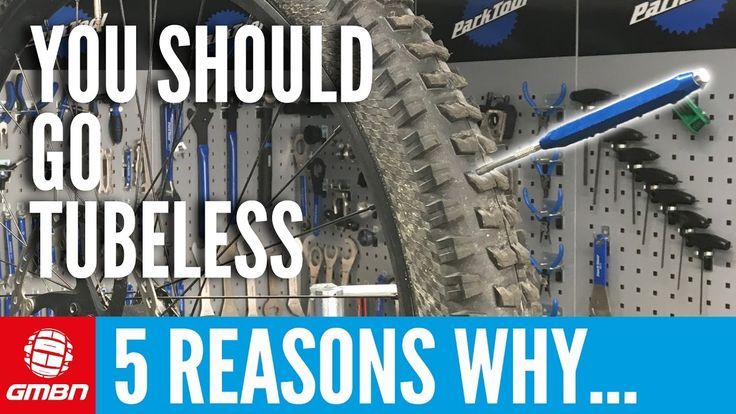
There is no definite answer, as you understand. Although there is - yes! nine0003
It all depends on your needs and the desired result. If we are talking about cross-country racing or something tougher, then it's worth a try. It would be cool to have your permanent bike mechanic who will lend a helping hand. And she will definitely need it.
From personal experience, I can say that they helped me lose weight off the bike. Although he could handle it with the help of conventional clinchers. However, I just wanted this for the urban mode of using a bicycle. I had to endure all the shortcomings and it seemed to me that I was happy. But how glad I was that I returned the camera to the wheel ... beyond words. Again, I used a clincher tire for tubeless use. Not very smart, with a lot of effort, but it works. nine0003
Would I go back to MTB tubeless and try it on a road bike? Certainly yes. Not without a “correction for the wind”, of course, I will gladly switch to tubeless again.